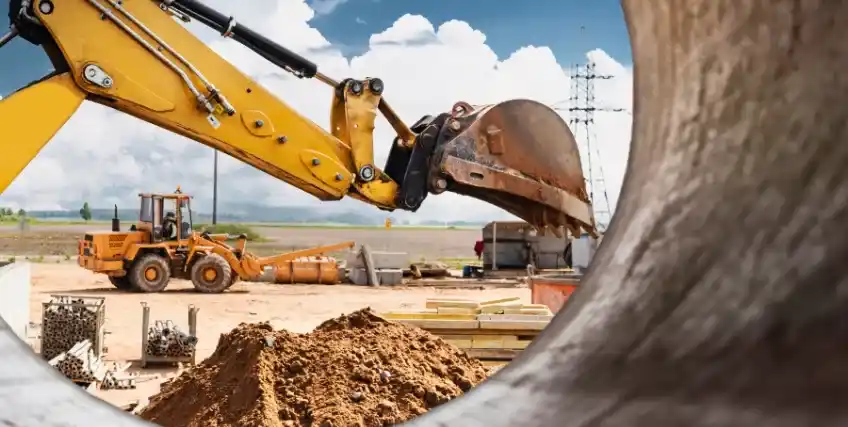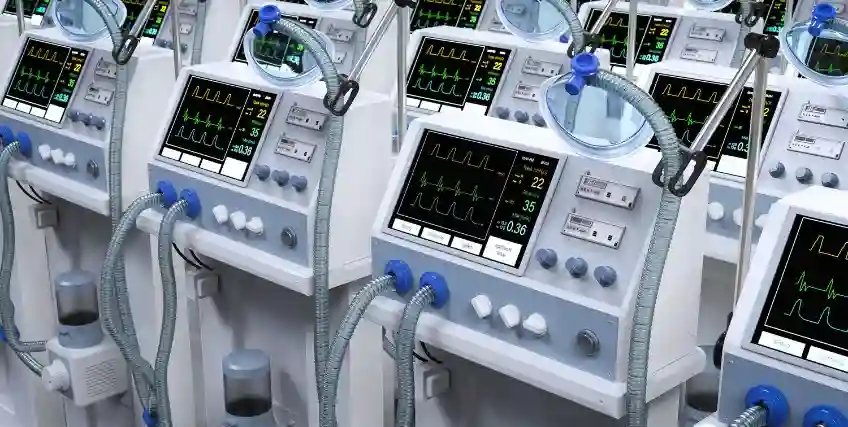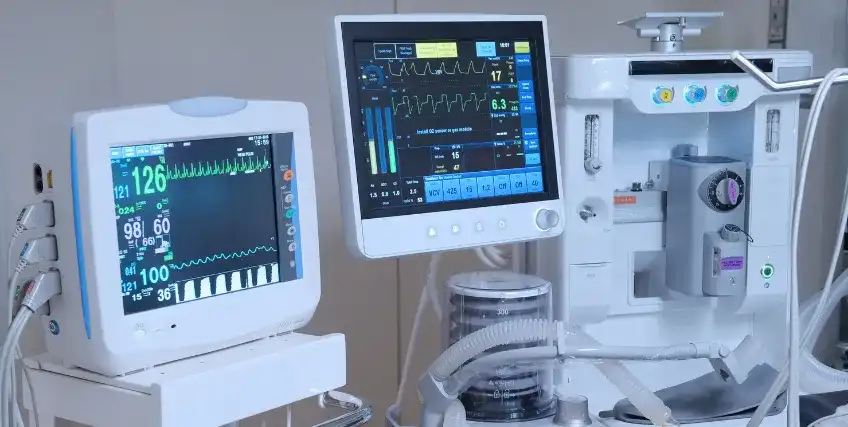The Impact of Interest Rates on Equipment Finance Loans
September 29, 2025 | Last Updated on: September 29, 2025

The impact of interest rates on equipment finance loans is profound, affecting everything from monthly payments to business growth opportunities.
Understanding how these rates work, and influence financing decisions is crucial for businesses planning capital investments in equipment.
An equipment finance loan is a preferred business financing method for many businesses to acquire essential assets while preserving working capital.
The interest rate applied to these business loans directly determines the affordability and long-term cost of financing solutions, shaping investment strategies and operational flexibility.
How Interest Rates Influence Equipment Finance Loans
Equipment finance loan interest rates are merely the cost of borrowing money from financiers. They are a percentage amount charged on top of the amount of money borrowed as a loan, and significantly impact the total payment companies have to make.
If interest rates are low, businesses can benefit from cheaper borrowing costs, which helps them invest in new or improved equipment. On the other hand, increased interest rates raise the cost of financing, tending to increase monthly payments and total equipment costs, and discourage capital spending.
In 2025 according to Crestmont Capital, equipment financing rates typically vary between 4% and 25%, depending on creditworthiness, loan term, and the type of lender. It is possible to get favorable rates at the lower end with a good business credit score, but higher equipment loan interest rates might be offered to riskier borrowers.
This is why establishing good credit and agreeing on suitable financing terms that align with the company's cash flow and investment returns should be pursued.
Economic Trends Shaping Equipment Loan Interest Rates in 2025
The larger economy is a key determinant of what equipment loan rates will be. The Federal Reserve's intention to lower interest rates twice in 2025 provides some optimism for businesses taking on equipment finance loans, as it reduces the borrowing cost.
Nevertheless, prevailing loan rates are likely to be higher than pre-pandemic rates, which means businesses cannot expect rates that were historically low as a last trend. Furthermore, a variety of regulatory and tax policies are expected to take effect, which would foster equipment investment by reducing the after-tax cost of equipment purchases as a genuine incentive.
This is seen from the prospects of extending provisions made under the Tax Cuts and Jobs Act. When changes to the economy occur, it can spur businesses to invest in equipment. Financing companies will anticipate better future cost structures for equipment ownership purposes and an opportunity to update old and used equipment and facilities.
Balancing optimism and caution will be necessary for both investors and borrowers as they navigate the uncertainty and recognize that changes to the trade rate can factor into the total cost of ownership and inform their appropriate financing needs.
How Interest Rates Affect Business Equipment Financing Decisions
The relationship between equipment finance loan and interest rates has a significant impact on a company's strategic decisions. The higher the equipment financing interest rates, the heavier the monthly payments, which squeeze cash flows that otherwise could be used for operations, marketing, or employee hiring. It can hinder or reduce planned equipment purchases, effectively damaging productivity or competitiveness.
On the other hand, reduced equipment finance loan interest rates enable more convenient access to financing, enabling firms to purchase newer or energy-saving equipment. This can enhance efficiency and minimize costs over the long term, justifying the upfront cost of finance.
While controlling these impacts, firms should consider the total cost of borrowing, rather than just the periodic loan payments. They increase the cost of owning equipment over its lifetime, thereby challenging profit margins due to high interest rates. Fixed-rate loans offer budget certainty in the event of a volatile rate environment, whereas variable rates may be appropriate for firms hoping for the rate to fall or those enjoying flexible budgets.
Factors Influencing Equipment Financing Rates
There are a number of factors that influence the rates of equipment loans:
- Credit worthiness and financial health: The better the business credit and financial health, the more likely the borrower will receive a lower interest rate. Because the lender views a borrower with strong financial management as a lesser risk, they may have the eligibility for a better interest rate.
- Loan term: While the shortest term available often features the lowest interest rate, it also comes with the highest monthly payment. Conversely, choosing a longer loan term means a lower monthly payment, but it often results in the borrower paying more interest over the total term.
- Type of equipment finance loan and value: Loans secured with high-value, valuable equipment are often offered better rates than those secured by less valuable equipment. When a lender has security collateral, they are less stressed.
- Down payment: The higher the borrower's down payment, the lower the risk to the lender, often resulting in lower interest rates.
- Lender type: Traditional business banks and credit unions may offer more competitive rates than online or alternative lenders. They might have stricter qualifications; however, an in-person lender typically has less risk and may offer you a lower interest rate.
Explaining some of these factors helps business owners negotiate better terms for equipment finance loans. Knowing as much information as possible about the variables that contribute most significantly to your potential rates is very helpful in your overall planning.
Strategic Considerations for Managing Equipment Financing Rates
Considering the multifaceted landscape of equipment loan interest rates, businesses should adopt careful consideration when choosing which strategies to pursue to obtain the best interest rates.
For example, improving your creditworthiness through consistent financial management and even timely payment of debts can significantly lower your interest rates for equipment loans. Business owners should also engage in the proposed behaviors of contacting lenders to seek competitive marketplace rates and a preferred loan structure.
Another key factor is selecting loan terms that align with the cash flow you expect to receive from the equipment. While a long-term loan may impose a lower restriction on your monthly cash flow, the long-term interest expense should be carefully considered.
Ultimately, this may result in significantly lower interest rates and more favorable payment options. If you inject collateral or simply make a large down payment, you may engage a lender who can offer lower rates or terms.
Growth Opportunities Amid Declining Rates
Overall, the situation for equipment finance in 2025 is favorable, as anticipated declining interest rates are expected to propel equipment acquisition. Businesses are increasingly employing equipment finance loans to enhance their technology infrastructure, insulate themselves from labor market pressure through automation, and invest in renewable energy projects. Such strategic equipment finance steps allow businesses to remain competitive in rapidly changing markets.
Leasing remains a common alternative or adjunct to equipment finance loans, offering the benefits of payment flexibility and possible tax advantages. While banks hold a significant share of equipment financing volume, long-established banking relationships provide additional benefits through tailored financing agreements and expert advice, helping companies manage changing interest rate environments.
Final Insights: Financing Wisely for Sustainable Success
Understanding the impact of interest rates on equipment finance loans is crucial to any business that desires to invest wisely for its future. While lower equipment finance rates save capital and enhance ROI, the issue is managing volatile rates and creating suitable financing terms. Businesses that engage dynamically with lenders, emphasize creditworthiness, and remain current with economic trends position themselves to leverage opportunities and avoid traps.
Equipment finance loans remain a powerful tool for acquiring essential business assets without compromising liquidity. By focusing on overall financing costs rather than isolated monthly payments, companies can make more intelligent, growth-oriented decisions that contribute to financial health and competitive position.
Ultimately, understanding equipment loan interest rate dynamics enables firms to optimize their investments, contain expenses, and drive growth with confidence in the face of an evolving economic landscape. The judicious use of equipment finance loans combined with foresight in planning for interest rates ultimately unlocks the potential of business equipment finance in the long term.
FAQs About Equipment Finance Loan
What is the average interest rate on equipment financing?
Equipment financing rates typically vary. Your approved rate for this type of equipment financing will be determined by your credit score, with higher ratings resulting in lower interest rates when financing new equipment.
What is the impact of interest rates on loans?
Interest rates will directly impact the total cost of the loan, payment flexibility, financing convenience, and eligibility. Simply, higher interest rates mean the loan will be more expensive, you may not pass the eligibility, or you may be unable to obtain the right equipment finance loan you want. A loan with fixed rates will lock in your payments at the date you obtain the loan, while a loan with variable rates will adjust your payments as interest rates change.
What is the typical interest rate for tractor loans?
Pricing or rates for any loan will vary from lender to lender.
Can I pay off an equipment loan early?
Some equipment financing alternatives do allow for early repayment, but these options often come with specific contract conditions. For example, you might be required to have a clean payment history, to have your credit reviewed before repaying early, or to finance your next new equipment purchase from the same lender.
What are the three main factors that affect interest rates?
The common factors are inflation, the balance of supply & demand for credit, and central bank policy. Inflation decreases the value of money in terms of the purchasing power it provides, so lenders raise interest rates. The supply and demand for credit will influence your options for financing, while central banks adjust their policies to manage costs for businesses investing in the right equipment.
Frequent searches leading to this page
Term Loans are made by Itria Ventures LLC or Cross River Bank, Member FDIC. This is not a deposit product. California residents: Itria Ventures LLC is licensed by the Department of Financial Protection and Innovation. Loans are made or arranged pursuant to California Financing Law License # 60DBO-35839




